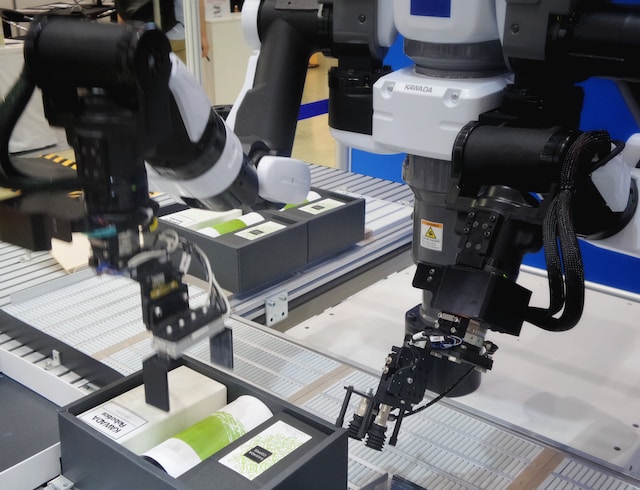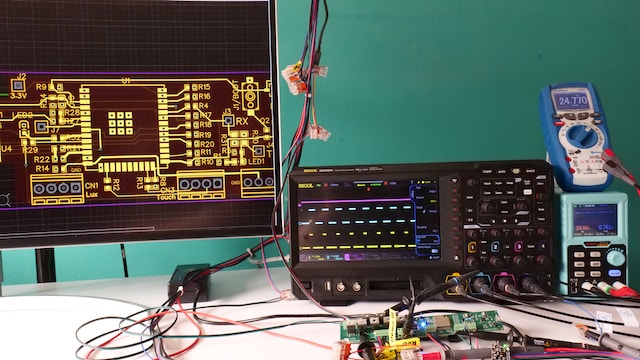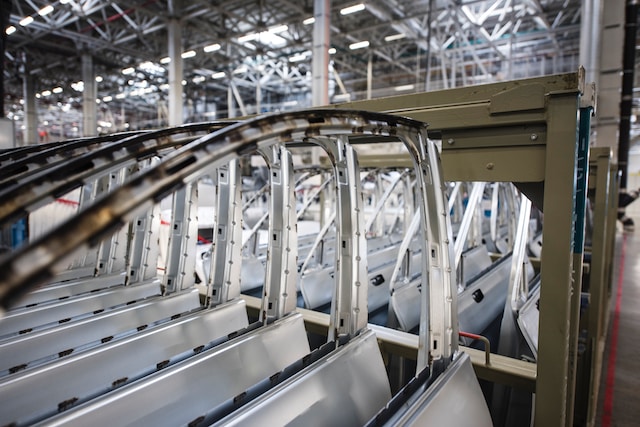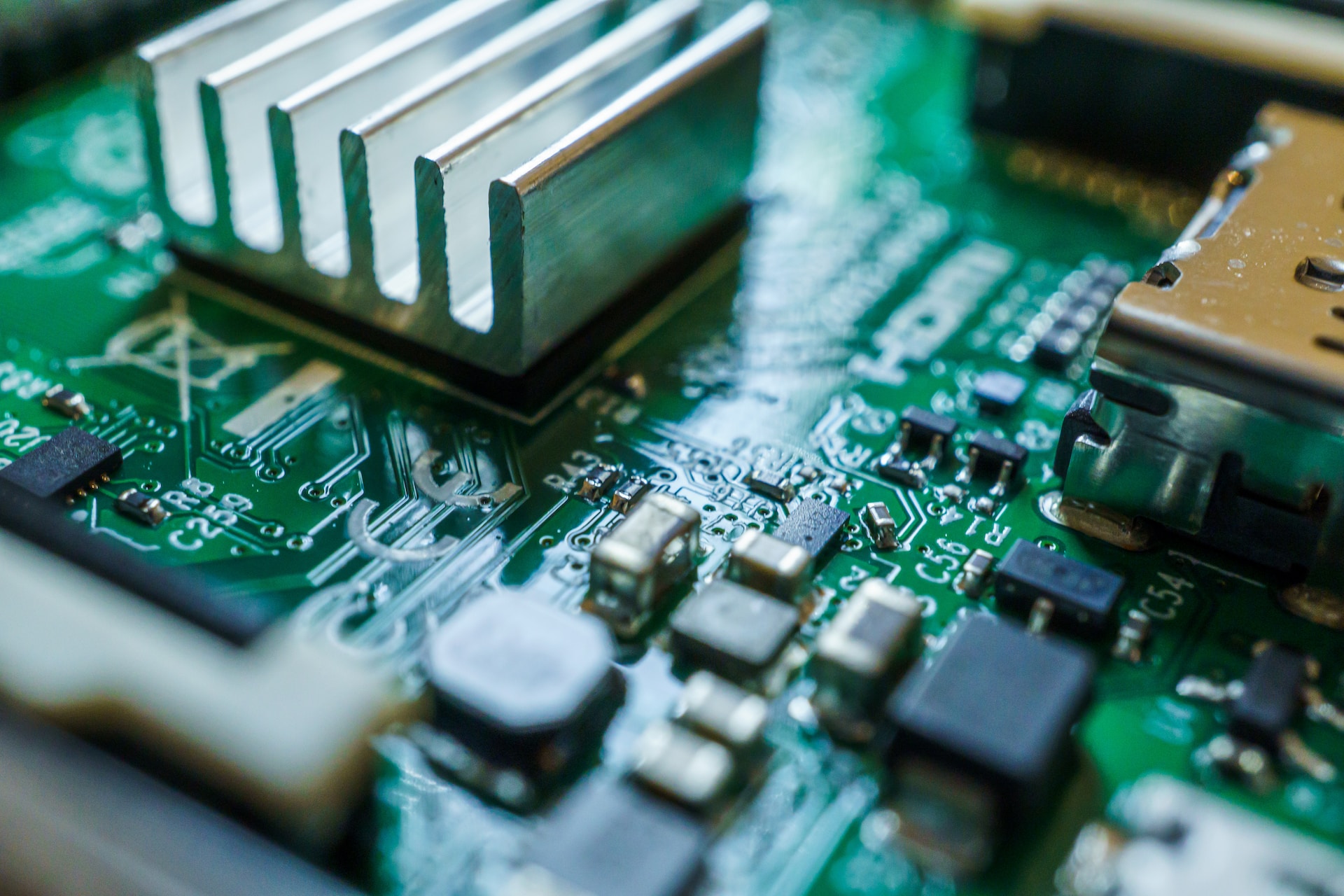Examples of embedded systems can be found in almost every area of modern business—technologies which are essential to operating the devices and equipment we often take for granted but are responsible for progressing lives everywhere, from medicine to transport, and farming to climate control.
With embedded systems experts playing such a crucial role in the manufacturing, automotive, transportation, aerospace, and life science fields, engineering and technology recruitment has been reshaped to support this massive job market and address its skills shortages.
As engineering trends towards leveraging the volume of data produced during industrial processes, and organisations begin to take advantage of the remote monitoring and communication potential of Internet of Things-empowered (IoT) sensors, various specialisms have been created to accommodate the multidisciplinary skillsets demanded by these complex roles.
But what are embedded systems specifically, and how long have we utilised them within the commercial and domestic environment? In this guide, we’ll answer not only that question, but look at some examples of embedded systems and engineering trends that have defined the past, present, and future of industry, food security, and healthcare.
What Are Embedded Systems?
The history of the embedded system goes back to the mid-20th century, particularly with the development of the integrated circuit in 1961, which helped to power the motion and navigation sensors in the Apollo space programme's Command Module and Lunar Module. More commercial applications followed in 1969, with the Volkswagen 1600 using a microprocessor to control its engine’s fuel delivery system.
These ICs, microprocessors, and microcontrollers helped to minimise the size and weight of computer systems, whilst at the same time making them more efficient, reliable, and powerful. In 1959, IBM introduced its 1401 Data Processing System, weighing in at around five tons and possessing 16 kilobytes of memory. By 1970, Data General had released their Nova “minicomputer”, a fifty-pound filing cabinet of a device which was intended for scientific, engineering, and medical uses, being the computer which processed the images produced by the world’s first CT scanner.
Over the intervening years, embedded systems have become more discrete and advanced. In 2023, our smartphones average less than 200 grams and are around ten million times faster than the IBM 1401.
As a result of embedded systems, engineering and technology recruitment have significantly shifted to accommodate the growing demand for skills in hardware and software integration, IoT sensors and control mechanisms implementation, and networking and connectivity.
From microcontrollers in production lines to interconnected IoT sensors, examples of embedded systems abound to show how integral they are to modern life. The central heating system in your home, software and hardware that powers your digital camera or phone and processes images and video, devices which dispense products or monitor stock levels in vending machines, EV charging stations, and our car brakes: we interact with embedded systems as part of our everyday lives.
In short, an embedded system is a combination of computer hardware and software integrated into a wider system, machine, or process, designed to perform a specific set of tasks well.
If you’re looking to learn more about embedded systems and the experts that work with them, see our recent video guide on How to Find and Recruit The Best Embedded and Electronics Specialists for our consultants’ top engineering and technology recruitment insights.
But how have ICs, microprocessors, and IoT sensors revolutionised the engineering and manufacturing industries, and what are some examples of embedded systems that are helping to progress lives everywhere?

Five Examples of Embedded Systems
Now that we have a better idea of what these technologies are and how they’ve evolved over time, we can look more closely at some examples of embedded systems and how their integration into machinery is crucial for not only the manufacturing environment, but the safe use of our personal vehicles, the management of buildings we use, and ensuring the supply of the food we eat.
1. Industrial Automation: Controlling the Manufacturing Process
Several examples of embedded systems are involved in manufacturing, from the familiar images of robotic arms spaced along vehicle assembly lines to the IoT sensors that provide real-time feedback and fine-grained control of performance and safety-critical parameters such as temperature, pressure, and speed in chemical engineering scenarios.
Robotic devices provide precision and increased safety on the production line, performing complex tasks and assisting human operators in all manner of manufacturing environments. Process optimisation and automation continue to be driven by technological and engineering trends, with advances in data collection and processing helping to enhance machine monitoring and enable more effective predictive maintenance, ultimately reducing downtime and ensuring that manufacturing companies remain competitive and profitable.
Advances in IoT sensors mean that as we move into the decade, robotic devices, machines, and other systems distributed across the industrial manufacturing environment will be able to communicate with each other, adjusting for optimum overall equipment effectiveness with minimal human intervention.
2. HVAC: Providing Seamless Climate Control and Cold Storage
Whether it’s perishable food or temperature-sensitive vaccines, embedded systems ensure that the environments in which we live, work, and store goods and materials are comfortable and safe through precise climate control. This plays out in the hiring figures, with engineering and technology recruitment firms reporting that the growth rate for HVAC technician jobs is set to exceed 10% between now and 2028.
Embedded sensors and systems are routinely used to automate heating, ventilation, and air conditioning, allowing for the evaluation and adjustment of temperature and humidity in an environment. With the growing use of IoT sensors, this means that it’s becoming ever easier to minimise the risk of products leaving the cold chain, no matter where they might be located on a site or production line.
Meanwhile, as engineering trends towards leveraging the volumes of historical and real-time data that these sensors process during the average production cycle, technicians and engineering managers can better predict equipment failures, leveraging wireless connectivity to provide proactive alerts to maintenance staff or perform remote troubleshooting.

3. Vehicles: Improving Safety and Efficiency
Embedded systems are not only vital within the manufacturing of vehicles across the globe, but have increasingly been the lynchpin around which automotive innovation and safety rotates. But what are embedded systems doing in our motorcycles, cars and buses?
Initially introduced in luxury models, examples of embedded systems can now be found at all price points throughout the automotive market, integrating with advanced driver assistance systems (ADAS) to provide various levels of driving automation, such as adaptive cruise control, as well as ensuring driver and passenger safety through anti-lock braking systems (ABS), for instance.
As we’ve seen in our look at the history of the field in the last section, the automotive industry was an early adopter of embedded systems and continues to contribute to their ongoing development.
In vehicles with internal combustion engines, control mechanisms and sensors are in place to allow drivers to monitor engine performance and automatically optimise their fuel efficiency. Meanwhile, the proliferation of hybrid and electric cars has led to the integration of systems that adjust energy usage to maximise range and allow for battery charging through regenerative braking, whilst charging infrastructure itself utilises embedded systems to evenly distribute loads across the variable number of vehicles that could be powering up at any one time.
4. Agriculture: Caring For, Picking, and Packing Crops
Within the agricultural industry, embedded systems are utilised throughout the farming, logistics, and storage processes. Equipment can autonomously sort and package delicate fruits and vegetables, whilst various agricultural functions such as planting, irrigation, and harvesting are now able to be carried out by machines and their human operators.
The growth of data analytics and IoT sensors have meant that examples of embedded systems can be found in integration with precision farming techniques to enhance crop yield, reduce waste, and ensure soil quality. Real-time information provided by these IoT sensors can help growers to remotely adjust irrigation and fertilisation, improving their productivity and reducing the need for physical inspection of crops.
As far as engineering trends go, embedded systems within the agricultural industry are helping to ensure food security, and—as wireless connectivity improves between hardware, software, and IoT sensors—will continue to empower more advanced autonomous machinery that can enhance safety and reduce damage to produce.
5. MedTech: Enhancing Research, Diagnostics, and Treatment
Examples of embedded systems can be found in almost every medical setting, but their significance is perhaps most clearly recognised in the life-saving diagnostic equipment and medical devices that enable healthcare practitioners to carry out their work. MRI, PET and CAT scanners, pacemakers, insulin pumps, patient ECG and O2 monitors, wearable smart devices—many of the technologies that we rely on to assist our carers when we’re in poor health would not exist without embedded systems.
As always, engineering trends toward the increasing miniaturisation of computer technology. As a result of the aforementioned integrated circuit and microprocessor, this has led to the growth of wearable medical devices which are able to track and report on patients’ vital signs, allowing healthcare providers and general practitioners to remotely monitor and adjust treatments based on real-world evidence.
With the global wearable medical device market anticipated to expand to a global value of $168bn by 2030, it’s likely that this lucrative field will continue to guide engineering and technology recruitment for some time to come.
The implications of these emerging technologies extend beyond healthcare and the hospital environment, supporting the clinical trial activities of pharmaceutical and medical device organisations. By enabling patients to remotely connect with clinical trials, they can remove one of the major impediments to successful research and regulatory approval, namely travel arrangements. Engineers working on embedded systems are helping to improve participant involvement via these decentralised clinical trials in quite a direct fashion.
These are just a handful of examples of how embedded systems are being leveraged to improve safety, efficiency, quality, and productivity across various past, present, and future industries. As we’ve seen, these technologies have a rich history and continue to evolve, enabling new applications and innovations while shaping wider engineering trends and the technology recruitment needs of businesses.

The Verdict
Embedded systems represent diverse technologies and applications that form the backbone of modern life and commerce. The examples of embedded systems we’ve explored in this guide—from integrated circuits to medical equipment—trace their origins to the technological innovations of the mid-20th century. These systems have continued to evolve, progressing towards greater discreetness and sophistication, driving transformation in the manufacturing environment, automotive advancements, the modernisation of precision agriculture, and breakthroughs in medical technology.
Moreover, embedded systems continue to shape and define engineering trends, shaping the landscape of technology recruitment. The integration of IoT sensors and remote management technologies is amplifying the need for engineers to possess multidisciplinary skillsets as they propel an array of industries into a more connected and data-driven workplace.
The influence of embedded systems may often go unnoticed, but their importance in both the past, present, and future of industrial automation, computing, and transportation underscores the pivotal role they play in the world we inhabit today.
Experts in Advanced Engineering and Technology Recruitment
At Amoria Bond, we’re committed to supporting professionals across the engineering industry, helping them to connect with market-leading businesses across the globe. We keep our pulse on engineering trends to ensure that we’re always able to provide exciting opportunities and make certain that every placement is the right fit, so contact us today or see our job search to partner with us and achieve your goals.






